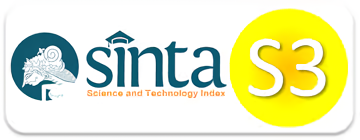Unlocking Peak Performance: Navigating Interpersonal Relationships, Work Facilities, and Work Procedures in the Tangerang City District Office
Background: Employee performance stands as a pivotal factor in bolstering the organization's vision and mission. However, at the Neglasari sub-district office in Tangerang City, several issues have been identified. These include ineffective communication and interaction among employees, insufficient work facilities and equipment, and the absence of clearly defined standard operating procedures (SOP). Such shortcomings can potentially undermine the consistency and quality of employee performance.
Objective: The objective of this research endeavor is to assess the impact of work procedures, work facilities, and interpersonal relationships on employee performance within the Neglasari District office located in Tangerang City.
Method: This is a quantitative study employing an associative methodology approach. The employed sampling methodology is probability sampling, specifically utilizing a questionnaire to conduct simple random sampling. Respondents for this survey comprised one hundred employees of the Neglasari subdistrict office. SPSS version 26 is utilized to process the data through multiple regression analysis.
Results: Interpersonal relationships and work procedures were found to have a significant impact on employee performance, whereas work facilities did not demonstrate a positive correlation with employee performance.
Conclusion: The results of concurrent experiments indicate that the variables of work procedures, work facilities, and interpersonal relationships have a substantial impact on employee performance.
Keywords: Employee Performance; Interpersonal Relationships; Work Facilities; Work Procedures.
Copyright (c) 2025 Marchela Indah Atrisia, Kartono, Ahmad Fadhlullah, Sherly Astuti

This work is licensed under a Creative Commons Attribution-NonCommercial-ShareAlike 4.0 International License.
Copyright notice:
- Authors retain copyright and grant the journal right of first publication with the work simultaneously licensed under a Creative Commons Attribution-NonCommercial-ShareAlike 4.0 International License that allows others to share the work with an acknowledgement of the work's authorship and initial publication in this journal.
- Authors are able to enter into separate, additional contractual arrangements for the non-exclusive distribution of the journal's published version of the work with an acknowledgement of its initial publication in this journal.
- Authors are permitted and encouraged to post their work online (e.g., in institutional repositories or on their website) prior to and during the submission process, as it can lead to productive exchanges, as well as earlier and greater citation of published work (See The Effect of Open Access)
















